Introduction
Stock strategy functions involve defining specific rules and criteria for buying or selling securities based on various technical or fundamental factors. These functions guide investors in making informed decisions, setting entry and exit points, and managing risk within their investment approach. Ultimately, stock strategy functions aim to optimize trading performance and achieve financial objectives in the dynamic and unpredictable stock market.Start
The Start function serves as the designated entry for users initiating the process of strategy creation and backtesting. It offers a quick and convenient way to set default frequencies and add new data effortlessly using the New Data button, streamlining the start of the strategy development journey with efficiency.Defualt Frequency
The default frequency in the “Start” component refers to a predefined frequency, such as 5 minutes, 15 minutes, 30 minutes, 60 minutes, or daily. By setting the default frequency, the frequency value in the “New Data” feature and subsequent functions would automatically synchronize with the preset default frequency.
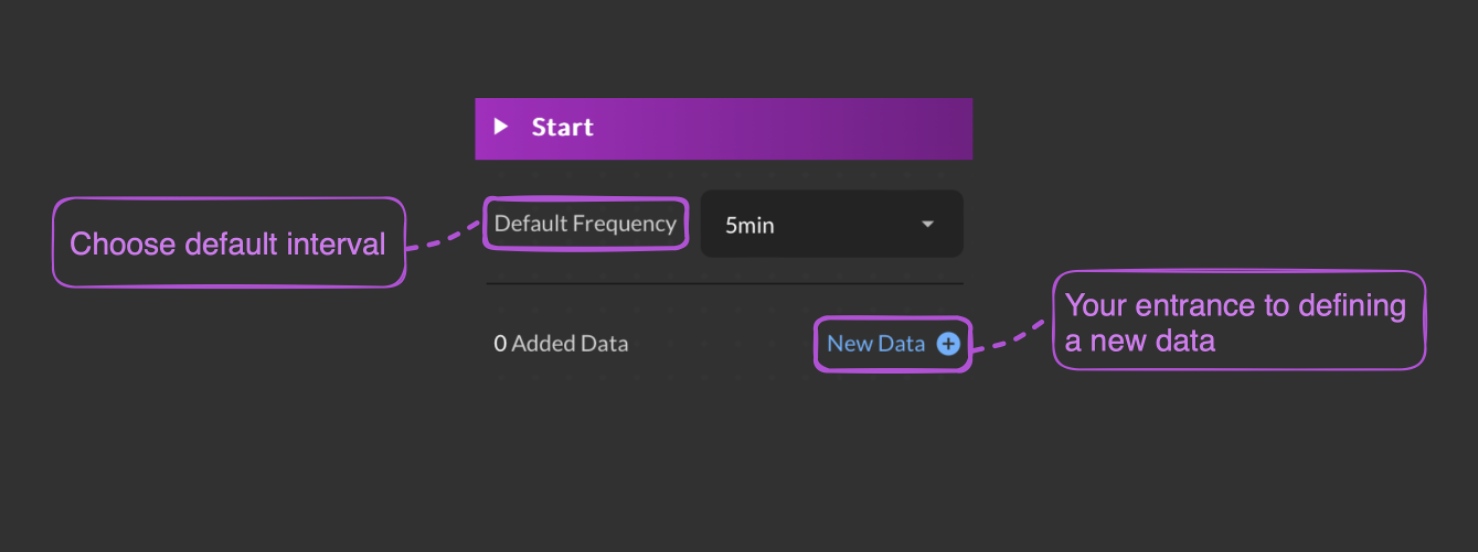
Accessible from both the Start Component and Data Library, the New Data button effortlessly leads users to the Data Setting Board. With Market and Indicator tabs, users can swiftly choose between market data or indicators, set preferred time frames, and define settings for an optimal strategy.
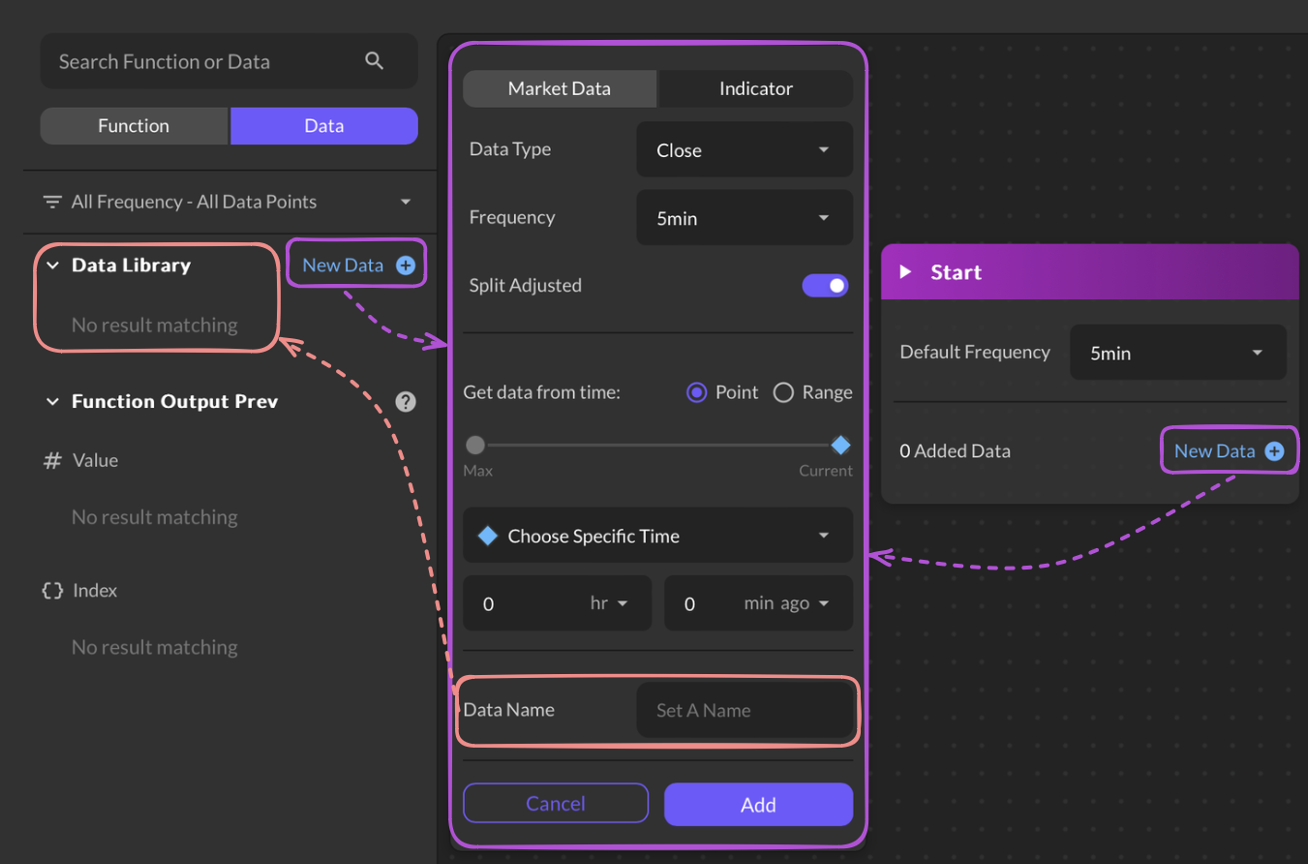
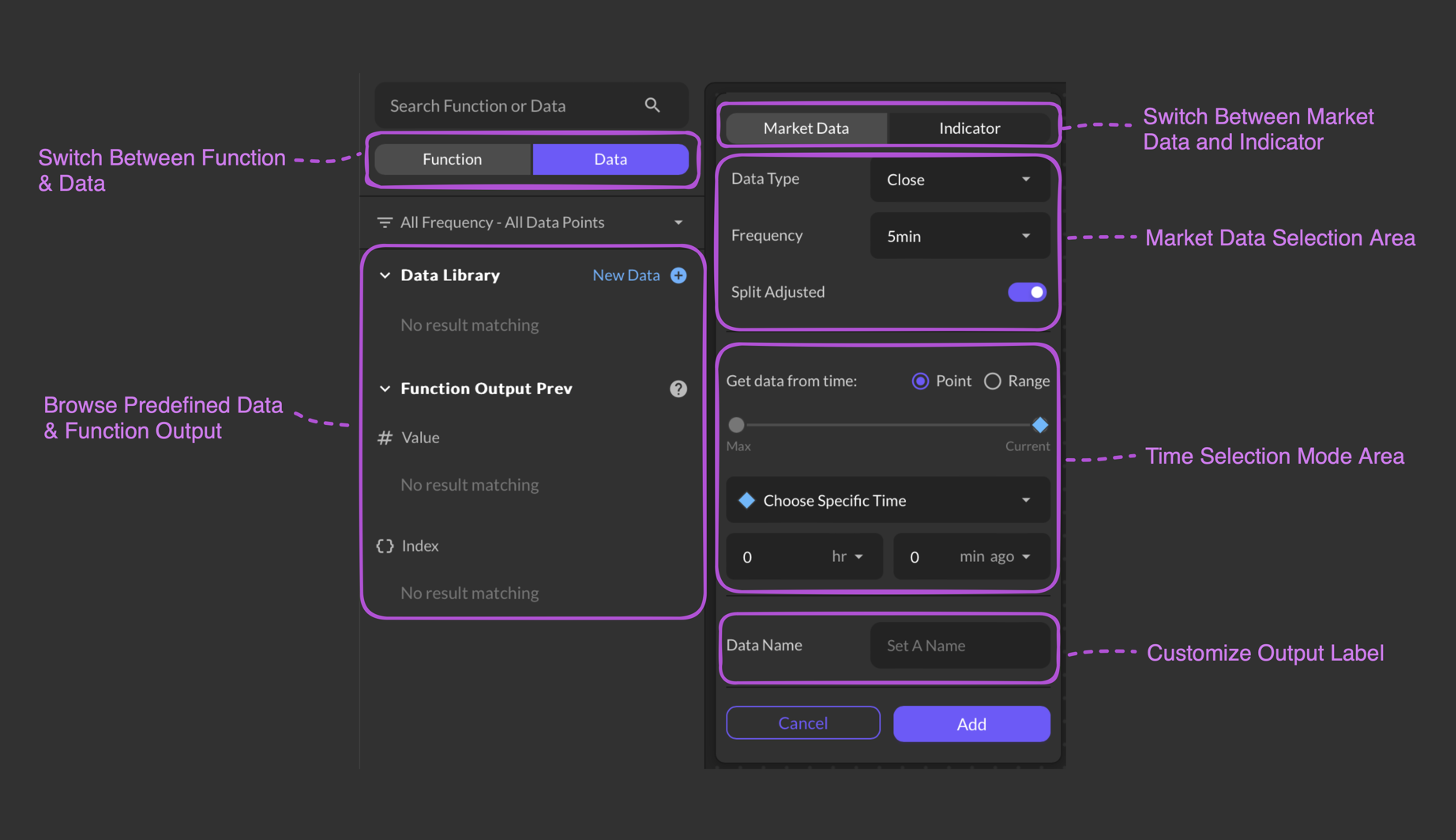
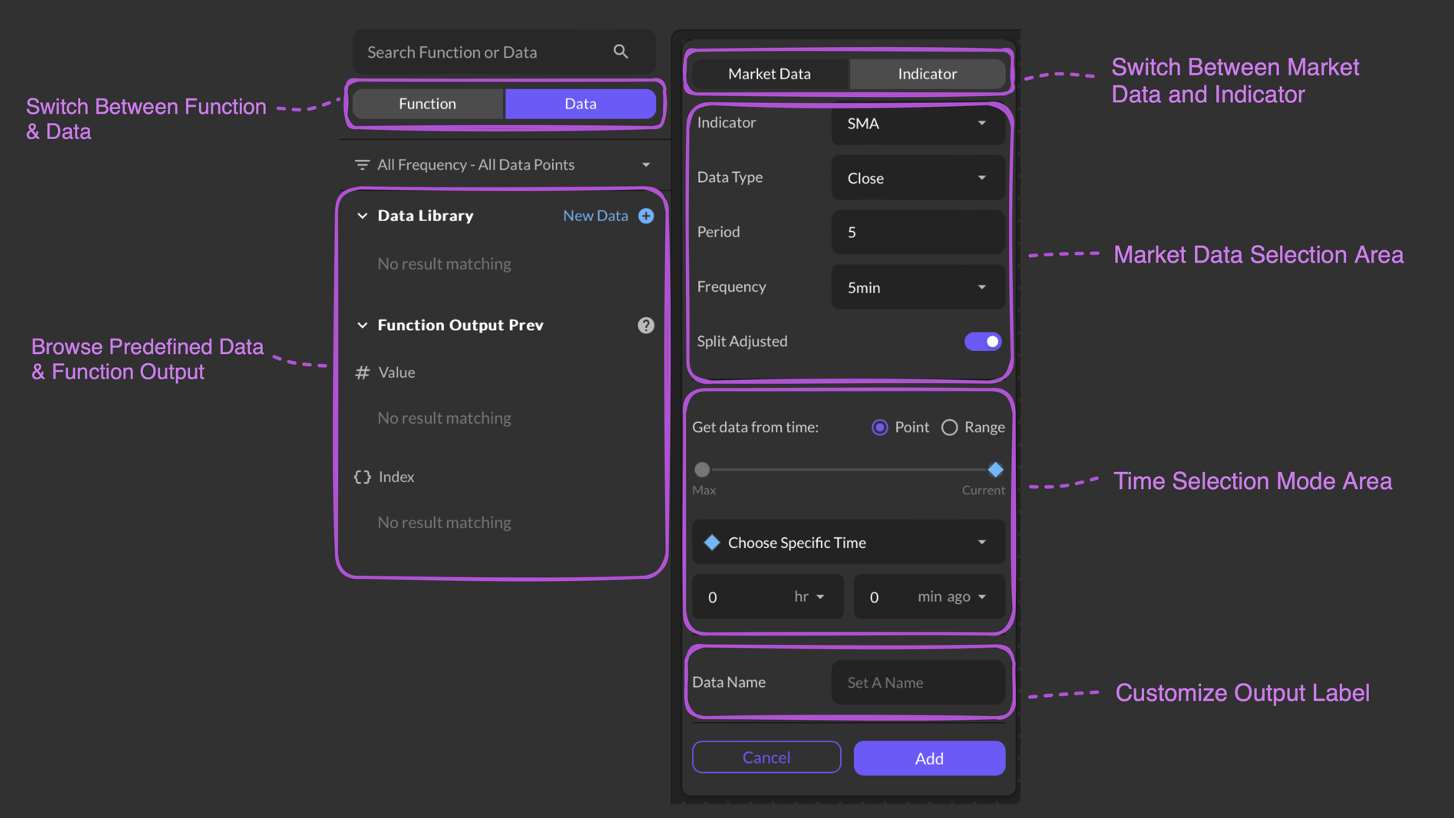
Input Parameter
- Market Data
- Indicator
Select a time point or time range
Select Hour and Minutes from the dropdown list. Max defaults is 250 days.
Users are required to provide a name for their data.
Get Data
The “Get Data” function retrieves historical pricing information for a specific stock, offering a chronological record of its past market performance. This data includes opening and closing prices, high and low values, trading volumes, and other relevant metrics, enabling users to analyze trends, make informed investment decisions, and conduct thorough market research.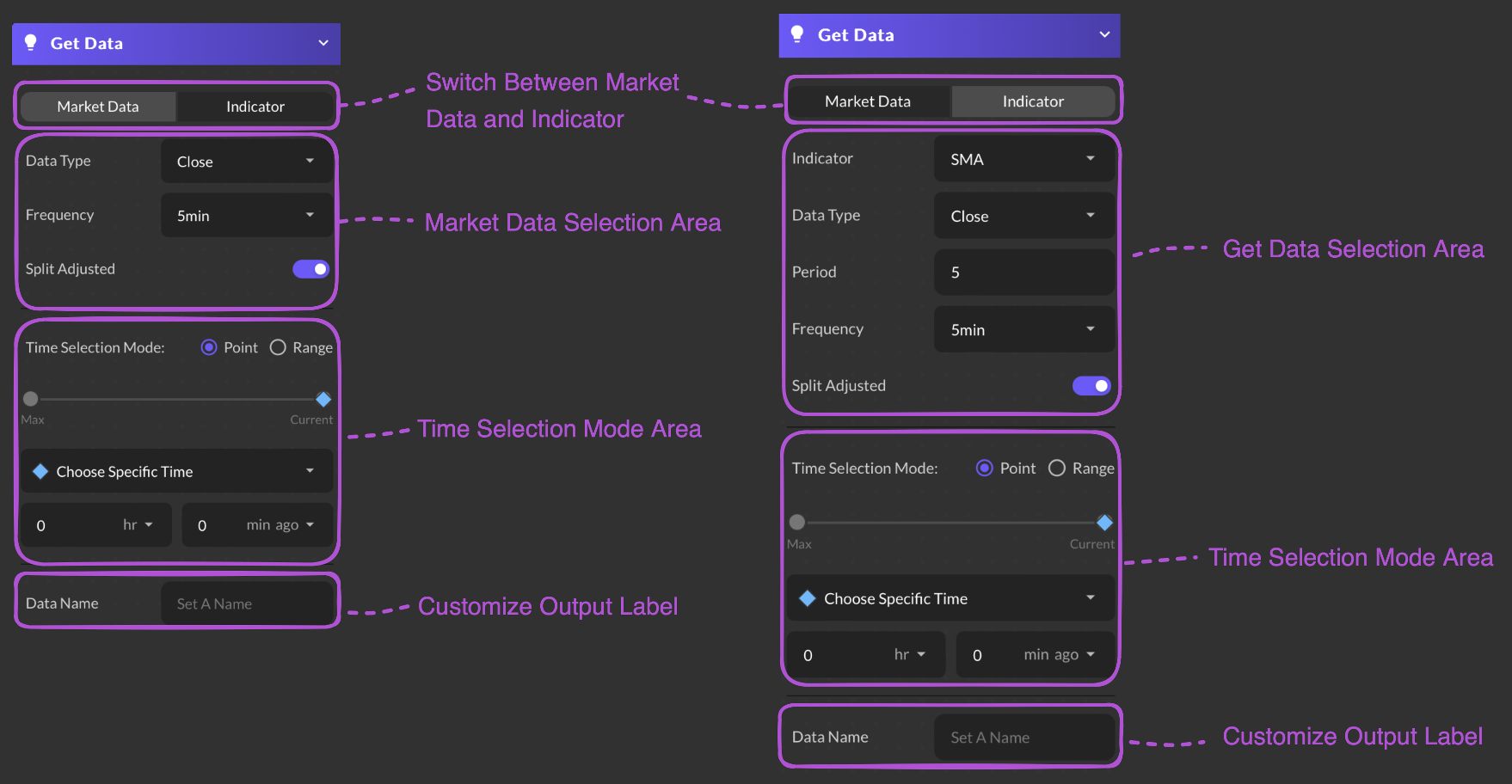
Input Parameter Example
- Market Data
- Indicator
Select a time point or time range
Select Hour and Minutes from the dropdown list. Max defaults is 250 days.
Users are required to provide a name for their data.
Compare
The Compare function simplifies the analysis of two values within a financial stock perspective. This efficient tool allows users to effortlessly assess and contrast key metrics, empowering them to make informed decisions in the dynamic landscape of the stock market.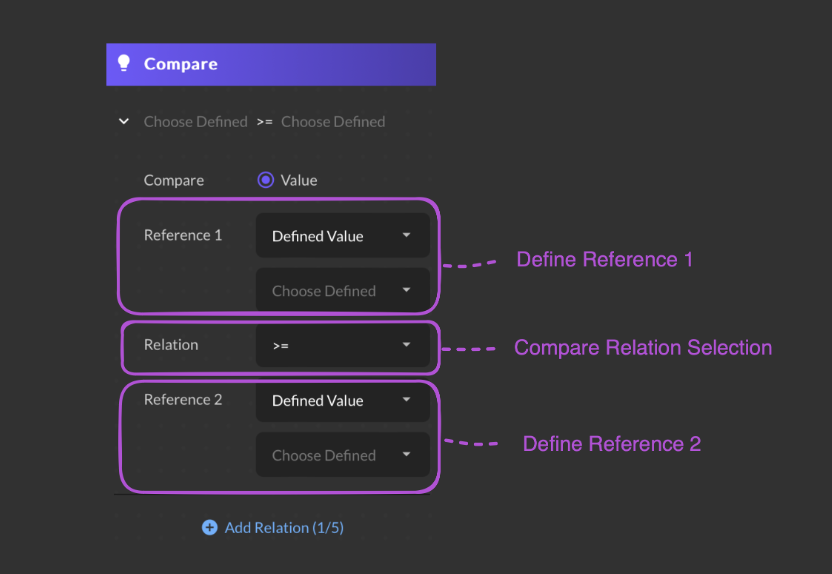
Compare
Assess by comparing two references based on its value.
Users are required to input values, and they have the option to either manually enter the values or select from a dataset saved in the database.
Choose from a mathematical relation
Mathematics and Statistics
The Mathematics and Statistics function encompasses a diverse range of capabilities, including fundamental operations like addition, as well as advanced statistical analyses such as standard deviation and linear regression. Whether users are calculating basic arithmetic sums or delving into sophisticated statistical modeling, this versatile function provides users with the tools for comprehensive mathematical and statistical analyses.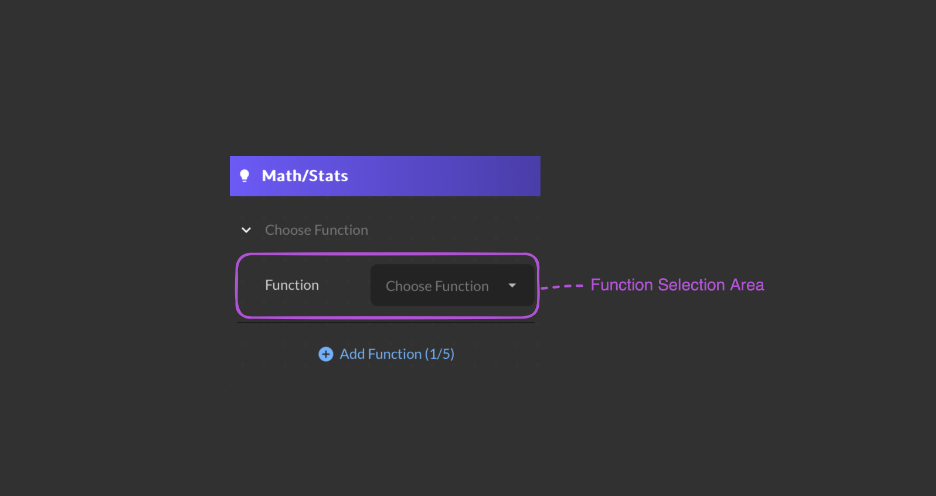
Choose from a mathematical function (Add, Standard Deviation, Beta, Linear Regression & Exp)

